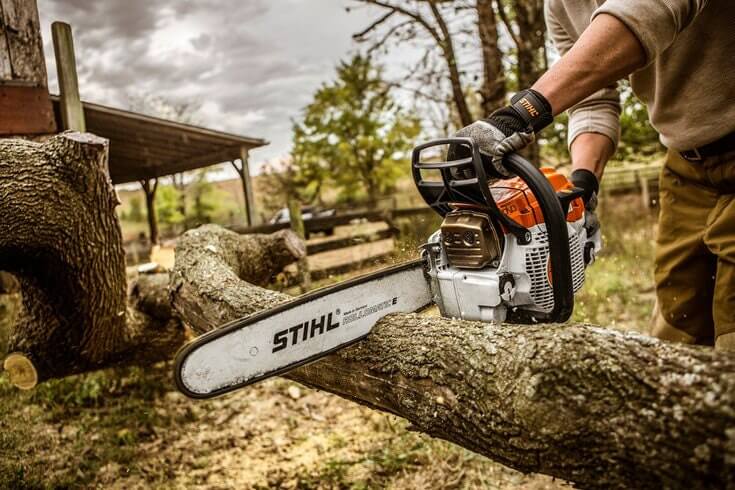Lifestyle
How to Look After Your Chainsaw

Using a chainsaw represents a serious business, with some five deaths and a number of serious injuries caused in forestry and agriculture during the last reporting period.
What’s more, many people own and use chainsaws in the home, particularly with cordless chainsaws now increasingly popular and widespread throughout the UK.
But how can you successfully look after your chainsaw? Here are some tips to help you on your way!
#1. Check the Chain’s Sharpness and Tension
The first step should be to investigate your saw’s sharpness, to ensure that it’s capable of working efficiently and completing jobs with the minimum of fuss.
Usually, you can gauge the sharpness of the chain by the consistency of sawdust produced during the cut, as debris that is fine and more powdery in nature may indicate that the saw is blunt and needs replacing.
If you notice an uneven cut, this may mean that the cutting teeth aren’t long enough or completely fit for purpose.
We’d also recommend that you check the chain’s tension, as maintaining this helps to secure it and minimise the risk of accidents. Ultimately, the chain should move a little when in use, but it shouldn’t be able to remove links from the nose.
#2. Ensure the Chain is Lubricated
Lubrication also provides a key role in the function of your chainsaw, as this prevents the tool from overheating while in use.
You can do this simply by checking your tool’s oil levels while revving your engine near the cutting surface. Then, suspend the chainsaw over the surface, and if oil appears on the surface, your lubrication is working perfectly well.
This should be done regularly and remains an integral part of maintaining your chainsaw’s performance, and carrying it out can help to save you considerable sums of money over time.
Also, Check – Tips to save money on groceries
#3. Use the Correct Tools for Your Chainsaw
As we’ve already touched on, you should never attempt to cut with a dull or blunt train, which is why you’ll need to regularly check the blade’s sharpness and take reactive measures to correct any issues where necessary.
However, you can also be proactive in your approach and safeguard your device simply by ensuring that you only ever use the correct tools for your chain.
For example, your sharpening kit should include a round file and a guide to be used to measuring both filling depth and angle, while you should avoid using makeshift items in instances where key pieces of kit are missing or need replacing.

-

 Business3 years ago
Business3 years agoHow to Do Long-Distance Moves with Children
-

 Travel2 years ago
Travel2 years agoQuick Guide: Moving To Santa Rosa?
-

 Real Estate3 years ago
Real Estate3 years agoWhy Dubai Festival City is a Great Neighbourhood for Young Learners
-

 Business3 years ago
Business3 years agoIs Guest Posting a Good Inbound Marketing Strategy?
-

 Business1 year ago
Business1 year agoThe Ultimate Guide To Thriving In Your Printing Franchise
-

 Business1 year ago
Business1 year agoExploring The Benefits And Challenges Of Restaurant Franchising
-

 Tech3 years ago
Tech3 years agoCyber Table That Will Change Your Life
-

 Lifestyle1 year ago
Lifestyle1 year agoDallas’ Hidden Gems: 6 Must-Try Restaurants Off The Beaten Path!









Recent Comments